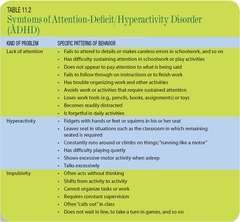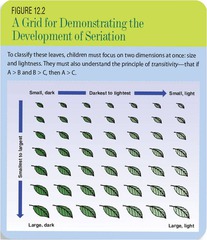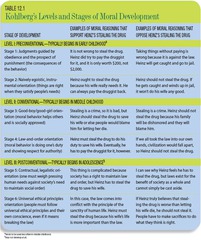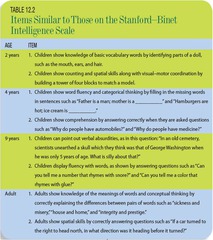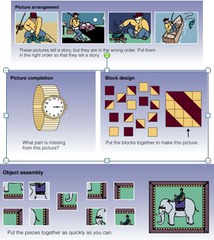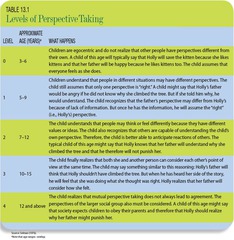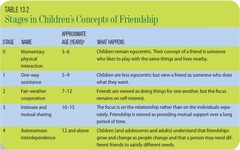growth patterns
7-12 yrs old...Grow 2 inches/year until the adolescent growth spurt...Gain 5-7 lbs...child's body weight doubles......become less stocky and grow more slender.
nutrition
Children in these middle years spend a great deal of energy in physical activity and play. School children burn more calories than preschoolers.
similarities and differences in growth
experience steady gains in height and weight and see an increase in muscle strength..... Boys: Are slightly heavier and taller than girls from 9-10 yrs. Around age 11 yrs, boys will develop more muscle....Girls: At 9-10 will begin their rapid adolescent growth and surpass boys in height and weight until about 13-14 yrs. Around age 11, girls will develop more fat.
overweight in adolescence
16-25% kids in U.S. overweight. Parents often assume heavy children will outgrown the "baby fat" but most overweight children become overweight adults. Overweight children are often ridiculed and rejected by peers. They are less athletic and considered less attractive in adolescent years. They also are at greater risk for health problems throughout life.
causes of overweight
Heredity factors: Some people inherit a tendency to burn extra calories. Other inherit a tendency to turn extra calories into fat.....Environmental factors: Family: overweight parents serve as role models and may encourage overeating and unhealthy choices Children who watch TV burn fewer calories. American children are exposed to thousands of food commercials per year, most for unhealthy foods.
overweight in children
Childhood is the optimal time to prevent or reverse obesity....Cognitive methods help by: Improving nutritional knowledge; reducing calories; introducing exercise; modifying behavior.....Behavioral methods involve: Tracking calories and weight; keeping child from temptations; setting good examples; using reinforcers....The most successful weight loss programs for children combine: Exercise; decreased caloric intake; behavior modifications; emotional support from parents
gross motor skills
Throughout middle childhood, muscles grow stronger and neural pathways connecting the cerebellum to the cortex become more myelinated. Experience refines sensorimotor abilities but there are also individual inborn differences
gross motor skills cont
By age 6 yrs hopping, jumping, climbing. age 7 yrs capable of riding a bike. age 8-10 yrs, they can participate in sports. Reaction time improves bc of myelination
Fine Motor Skills
By age 6-7, children can perform many fine motor skills (tying shoelaces, holding pencils like adults)
motor dev sex differences
Boys show more forearm strength. Girls show more coordination and flexibility
motor dev and exercise and fitness
Exercise reduces risk of heart disease, stroke, diabetes, and some types of cancer. Cardiac and muscular fitness is developed by aerobic exercise, however schools and parents tend to focus more on competitive sports such as baseball and football
ADHD def and stats
ADHD is characterized by excessive inattention, impulsiveness, and hyperactivity. (Not to be confused with normal active behaviors). Typically occurs around age 7 yrs ....1-5% of school age children are diagnosed; more commonly in boys, sometimes "over-diagnosed" to encourage more acceptable behavior
ADHD causes
Genetic component: brain chemical dopamine. Lack of executive control of the brain over motor and more primitive functions. Not caused by artificial food additives
ADHD treatment and outcomes
Stimulants such as Ritalin are most used treatment. They promote activity of dopamine and noradrenaline in the brain that stimulate the "executive center." (drugs help increase the low activity in prefrontal cortex). Some children "outgrow" ADHD; others persist with problems into adolescence or adult years.
symptoms of ADHD image
lack of attention, hyperactivity, impulsivity
learning disabilities
disorders characterized by inadequate development of specific academic, language, and speech skills. Learning disabled children may show problems in some of the following areas: Math, writing, or reading,Speaking or understanding spoken language or Motor coordination
learning disabilities cont
Performing below the expected level for their age and level of intelligence with no evidence of other handicaps (vision-hearing-retardation-etc) usually leads to a diagnosis of Learning Disability.
Disability may persist through entire life but early remediation can help many to compensate.
dyslexia
a reading disorder characterized by letter reversals, mirror reading, slow reading, and reduced comprehension
dyslexia genetic factors
25-65% of dyslexic children have one dyslexic parent. 40% of siblings of children with dyslexia are dyslexic. Left brain hemisphere circulation problems causing oxygen deficiency. Problems in the angular gyrus of the brain may cause difficulty for readers to associate letters with sounds. Some research points to similarities in brain abnormalities between schizophrenia and dyslexia.
dyslexia and Phonological Processing
Dyslexic children may not discriminate sounds as accurately as others, creating confusion and impairing reading ability.
special education
Programs created to meet the needs of schoolchildren with mild to moderate disabilities including: Emotional disturbance, mild mental retardation, physical disabilities (i.e., blindness, deafness, paralysis)
Evidence is mixed on whether placing disabled children in separate classes can stigmatize and further segregate them from other children
Mainstreaming:
Placement of disabled children in regular classrooms adapted to meet their needs
Concrete-Operational Stage
7-12 yrs. Children show beginnings of logic and focus is on tangible (concrete) objects. Thought is now reversible and flexible. Children are less ego-centric. engage in decentration (the ability to focus on multiple parts of a problem at once)
Conservation
The concept that objects can have several properties or dimensions simultaneously. Children at this stage now show understanding of the laws of conservation.
Seriation and transivity
Understanding of this concept is tested by demonstrating the ability to place objects in a series, or order, according to some property or trait they possess. (Pre-operational children cannot put in order more than one property at a time). Concrete-operational children, age 7-8 yrs, can work with more than one dimension at a time.
Class Inclusion
The ability to differentiate subclasses of objects.The Concrete-Operational child is now able to understand that "dog" is part of a larger class "animal."
Applications of Piaget's Theory to Education
Piaget believed learning involves active discovery. Teachers should use interesting and stimulating materials rather than simply try to impose knowledge. Instruction should be geared to the child's level of development. Learning to see others' perspective is key to cognition and morality. Teachers should promote group discussions and interactions among students.
Moral Development
Moral reasoning is related to a child's overall cognitive development. Both Piaget & Kohlberg believed moral reasoning follows similar cognitive-developmental patterns world wide. The individual cultural settings exert influence on moral development but there is still an orderly unfolding of cognitive processes.
Piaget's Theory of Moral Development stages
Stage 1: Moral Realism and Stage 2: Autonomous Morality
Stage 1: Moral Realism (Objective Morality)
age 5: Judge correct behavior as conforming to authority or following the rules. Perceive rules as embedded in structure of things. Rules reflect reality: MORAL REALISM. Rules are seen as absolute with no consideration for meeting social needs of people. The concept of IMMANENT JUSTICE (automatic retributions) disallows children at this stage to separate intentional from accidental thus does not allow exclusion from punishment for accidental injuries. At this stage, the amount of damage is more relevant than the intentions of the wrongdoer.
Stage 2: Autonomous Morality
Age 9-11. Moral judgments become more self-governed. Children see rules as agreements subject to change when circumstances warrant. They can now focus on multiple dimensions; so can see rules and motives as separate considerations. They also now have greater capacity to empathize. Decentration and empathy allow weighing of intentions versus amount of damage as consideration in judgments. Accidents are less likely to be viewed as crimes.
Kohlberg's Theory of Moral Development
Kohlberg emphasized importance of viewing morals from someone else's perspective. He argued that developmental stages of moral reasoning follow the same sequence in all children. Stating children progress at different rates and not all reach the highest stage. For early and middle childhood, he placed the reasons for judgments into two levels of development with 2 stages in each level (4 stages in all).
The Preconventional Level (kohlberg moral dev)
Children base moral judgments on the consequences of their actions. Stage 1 & 2 moral judgments most used by 7-10 year olds; after age 10 they decline...Stage 1: Oriented toward obedience and punishment. One is good merely to avoid being punished....Stage 2: Good behavior satisfies own needs and maybe others
The conventional level (kohlberg moral dev)
Right and wrong are determined by conformity to family, religious, and societal standards. Stages 3 & 4 emerge during middle childhood after age 7. About 20% of 10 yr-olds conform to these stages .....Stage 3: Moral behavior is considered "normal" or what everyone does. It is good to meet the expectations of others.....Stage 4: Moral judgments based on rules that maintain social order. Showing respect for authority and duty is highly valued.
kohlbergs moral dev image
information processing
Development of selective attention. Development of capacity for memory and understanding of the memory process. Development of problem-solving abilities
selective attention (info processing)
The ability to focus attention and screen out distractions. Concrete-Operational children can now attend to multiple aspects of a problem at the same time. This allows conservation of number and volume.
memory (info processing)
The process of storing and retrieving information
recall memory (info processing)
Children's memory is a good overall indicator of cognitive ability. 4th graders have better recall than 2nd graders.
Metacognition (info processing)
Awareness and control of one's own cognitive abilities
Metamemory (info processing)
An aspect of metacognition referring specifically to awareness of the functioning of memory. Older children store and retrieve information more effectively and show more knowledge of strategies used to facilitate memory. Selective rehearsal (repeating important information as way of remembering it) is used after about age 6-7.
Sensory Memory: (sensory register)
Input from the sensory organs: lasts for only a fraction of a second after which the "trace" of the stimulus decays
Short Term Memory: (working memory)
When focus is placed on a sensory input, it is retained in STM for about 30 seconds. Auditory stimuli last longer than visual; it helps to ENCODE visual input as sounds and employ REHEARSING as means of memory aid. The capacity of short-term memory is best described as "bits" or chunks of information that can be kept in memory at one time. Typical 5-6 year olds can retain 2 chunks of information at a time but this capacity increases with maturity; an adult can retain about 7 chunks give or take 2. ROTE LEARNING: is simple associative learning based on repetition
Long Term Memory:
If something in STM is attended to, it can be dedicated to long term memory, a vast storehouse of a lifetime of information. There is no known limit on the quantity of information humans can retain. If someone is unable to retrieve information, it is most likely due to lack of knowing where to find it (similar to misfiling in a file cabinet). Older children are most likely to use rote rehearsal when trying to remember something. But a more EFFECTIVE WAY TO PROMOTE MEMORY RETRIEVAL IS BY USING ELABORATIVE STRATEGY, THE METHOD OF RELATING NEW MATERIAL TO ALREADY KNOWN MATERIAL.
Organization in Long-Term Memory
Preschoolers tend to organize memories by grouping objects according to general functional categories. In middle childhood, the organization becomes more narrowed and specific. When items are correctly categorized, children are more likely to recall them accurately. Knowledge in a particular area increases the capacity to store and retrieve related information.
Children's Eyewitness Testimony
When a child is an eyewitness to an event, they are typically asked questions to prompt information. Caution must be used to avoid "leading questions" or questions that suggest an answer. By the age of 10-11, children are no more susceptible than adults but younger children are more likely to be misled. Repeated questioning may lead a child to fabricate events that never happened
Intellectual Development, Creativity, and Achievement
At an early age, we form impressions of our intelligence by comparison to others. We associate intelligence with academic success, career advancement, and good social skills. Intelligence is an intangible quality making measurement difficult. INTELLIGENCE: underlying competence or learning ability. ....ACHIEVEMENT: the performance of acquired competencies. Many of the competencies underlying intelligence are seen during middle childhood, when most children are first exposed to formal schooling.
Factor Theories: (Spearman)
Intelligent behaviors have a common underlying factor, g, which stands for GENERAL INTELLIGENCE: representing broad reasoning and problem-solving abilities. He also noted people seem more capable in some areas than in others, suggesting that SPECIFIC CAPACITIES OR S FACTORS account for certain individual abilities.
Factor Theories (Thurstone)
Intelligence consists of several specific, independent factors or primary mental abilities. Visual-spatial, perceptual speed, numerical, semantics, rapid word acquisition, reasoning
Sternberg's "Triarchic" Theory of Intelligence:
ANALYTICAL Intelligence: Academic ability; problem-solving; acquiring new knowledge...CREATIVE Intelligence: Ability to cope with new situations and to profit from experience. Ability to perceive similarities and differences, fostering adaptation...PRACTICAL Intelligence: "Street smarts": enables people to adapt to the demands of their environment, both physical and social.
Gardner's Theory of Multiple Intelligences
VERBAL: language skills...LOGICAL/MATHEMATICAL: math and reasoning skills...SPATIAL: visual orientation...BODILY/KINESTHETIC: athleticism...MUSICAL: composing and playing...INTERPERSONAL: relating to others...INTRAPERSONAL: self-insight, Individuals may show great "intelligence" in one area without notable ability in others. Critics agree people may have special "talents" but question whether they are "intelligences."
Measurement of Intellectual Development
Thousands of intelligence tests are administered by psychologists and educators every day. There are a variety of test instruments, the two most widely used are: The Stanford-Binet Intelligence Scale (SBIS) & The Wechsler Scales. The concept of intelligence per se is difficult to define. Tests are frequently revised and used to make vital educational decisions about children. A score on an intelligence test may well determine the placement of a child in special classes for mentally retarded or gifted children.
The Stanford-Binet Intelligence Scale (SBIS)
adapted by Terman at Stanford University. It measures IQ by using the formula: IQ = MA/CA X 100 (IQ=Intell. Quotient - MA=Mental Age - CA=Chronological Age) Therefore, if two children answer all the questions the same but one is younger than the other, their IQ scores will be different, with the younger child having a higher IQ score.
stanford-binet example image
Measurement of Intellectual Development, con't.
WECHSLER INTELLIGENCE SCALE FOR CHILDREN (WISC): school age children....WECHSLER PRESCHOOL AND PRIMARY SCALE OF INTELLIGENCE (WPPSI): preschool children....WECHSLER ADULT INTELLIGENCE SCALE (WAIS)...Test questions are grouped into subsets: VERBAL tasks: test knowledge of verbal concepts. PERFORMANCE tasks: test spatial-relations concepts
Wechsler's Intelligence Scales Example image
Performance Items on an Intelligence Test image
the testing controversy
There may be racial and cultural biases inherent in intelligence testing instruments. CULTURAL BIAS: African American and Latino/a American children's performances may be compromised by SES disadvantages and/or lack of motivation and self-confidence....CULTURE-FREE (CULTURE-FAIR) CATTELL'S CULTURE-FAIR INTELLIGENCE TEST evaluates without reliance on expressive language abilities but tests for comprehension of rules governing geometric designs. However, middle class children still outperform lower-class children. Culture-free tests do not predict academic success as well as other intelligence tests, and scholastic aptitude remains the central concern of educators.
Patterns of Intellectual Development
Many factors influence changes in IQ scores, including changes in the home, SES circumstances, and education
Intellectual growth occurs in at least two major spurts:
First at about age 6...Coinciding with entry into school which may help to crystallize intellectual functioning. And shifting from preoperational to concrete-operational thought....Second at about age 10-11. By middle childhood, children seem to show more stable patterns in gains but there are still spurts. Intelligence tests gain greater predictive power. But individual differences still exist.
Differences in Intellectual Development
average IQ score is 100. Half score 90 -110. 95% attain scores between 70 -130. Below 70 = "mentally retarded" Significant limitations in intellectual functioning and adaptive behavior. 80% are mildly retarded: adjust to society as a whole. Moderately retarded: such as Down Syndrome children function with supervision. Profoundly retarded: totally dependent. Causes: BIOLOGICAL: genetic disorders, brain damage, etc..CULTURAL-FAMILIAL RETARDATION: biologically normal but due to impoverished environment lack intellectual and social functioning abilities
Differences in Intellectual Development, con't.
Above 130 = "gifted": having outstanding ABILITIES...SOCIOECONOMIC AND ETHNIC DIFFERENCES IN IQ: Research shows differences in IQ scores between socioeconomic and ethnic groups. Lower-class American children have scores 10-15 points lower than middle-class or upper-class. African American, Latino/a American and Native American children score below the norms for European American. Children of Asian descent frequently outscore European Americans in math and science. Asian students and families tend to attribute academic success to hard work. Americans more likely attribute it to natural ability, indicating Asian children may be working harder to attain their goals.
Creativity
the ability to do things that are novel and useful...Characteristics include: Solving problems with no preexisting solutions, Taking chances, Refusing to accept limitations, Appreciation of art and music, Challenging social norms, Use of critical thinking skills
Creativity and Intellectual Development
The relationship between creativity and intelligence depends on how one defines intelligence. Sternberg's model includes creativity as one of the three parts of intelligence along with analytical thinking and practical intelligence. Some others argue that creativity and innovation require high levels of intelligence; but tests measuring intelligence and creativity show only moderate correlations. Tests of creativity determine how flexible, fluent, and original a person's thinking is.
Convergent thinking
Most commonly used to arrive at correct answers on IQ tests. Thought is limited to present facts; thinking is narrowed to arrive at correct answer; process of elimination is used as in multiple choice questions
Divergent thinking
Child associates freely to the elements of the problem. Used when trying to generate ideas
Determinants of Intellectual Development
Overall, studies suggest the HERITABILITY of intelligence is between 40% and 60%. Making genetic factors the explanation for about half the differences in IQ scores among individuals. Studies of environmental influences show enriched environments help children attain higher IQ and achievement test scores. Many psychologists believe HEREDITY AND ENVIRONMENT INTERACT influence intelligence
vocab and grammar
By age 6, vocabulary of 10,000 words. By age 7-9, they realize words can have multiple meanings (enabling semantic sophistication required to understand humor and jokes). By middle childhood, children understand passive sentences, can use connectives, and form indirect object/direct object constructions.
Reading Skills and Literacy
illiteracy limits ppls access to contemporary knowledge. Illiteracy is found most severe among recent immigrants. Reading involves perceptual, cognitive, and linguistic processes, relying on integration of visual and auditory information. Children must accurately perceive sounds and make basic visual discriminations. Exposure to written language comes from TV, environmental information, and parents reading to their children. Children who are exposed to reading from an early age are better prepared for learning to read.
Methods of Teaching Reading
Children read by integrating visual and auditory information. Most children and adults use a combination of the two methods. Some words can only be read by recognition, providing children with basic SIGHT-VOCABULARY....WORD-RECOGNITION METHOD: Associates visual stimuli with sound combinations to produce the spoken words. Acquired by rote learning or extensive repetition....PHONETIC METHOD: Child learns to associate written letters and letter combinations with the sounds they indicate in order to "sound out" words. Provides skills to use in decoding new words
Bilingualism: Linguistic Perspectives on the World
Bilingual (using two languages with equal skill) children do not encounter more academic problems than those speaking one language. (A century ago it was widely believed that having two linguistic systems crowded a limited mental capacity). Most bilingual speakers do "mix" languages somewhat but can generally separate them at an early age. Bilingualism to be an ADVANTAGE because knowledge of more than one language contributes to the complexity of cognitive process making them more cognitively flexible.
Freud--psychoanalytic
Middle years are LATENCY STAGE. Sexual feeling remain repressed (unconscious) during this period. The focus is on intellectual, social, and other culturally valued skills.
Erikson--psychoanalytic
Labeled these years the INDUSTRY VS. INFERIORITY stage. Children who master the challenges of this age develop a sense of competence. Those who have difficulties may develop a sense of inferiority.
social cognitive theory
Focuses on the importance of rewards and modeling. Children depend less on external rewards and punishments and become more self-regulating. They are exposed to an increasing variety of models at this time. Parents, teachers, other adults, peers, and symbolic models such as TV characters are influential as models
Piaget (Cognitive-Dev. Theory and Social Cognition)
Middle childhood is during the concrete-operational stage of development. There is a decline in egocentrism and an expansion of viewing the world from other's perspectives. This cognitive advance affects the child's social relationships.
Selman et al. (Cognitive-Dev. Theory and Social Cognition)
SOCIAL COGNITION: the perception of the social world. Describes five levels of perspective-taking skills
levels of perspective taking image
Development of the Self-Concept
By middle childhood, children become more focused on abstract internal traits (personality traits) that begin to play a bigger role in development. Self-esteem and Learned Helplessness take part in that process.
self esteem
By age 7, children begin to self-evaluate in seven different areas: Physical ability, Physical appearance, Peer relationships, Parent relationships, Reading, Math, General school performance. They also report a general self-concept; they can compare themselves with others and reach a more honest and critical evaluation than in early childhood. Self-esteem declines throughout middle childhood reaching a low ebb at ages 12-13 then begins to increase again during adolescence.
Learned Helplessness
The belief that one is unable to obtain the rewards that one seeks
"Helpless" children tend to quit following failure. Children with high self-esteem persist or change strategies for success. "Helpless" children believe success is due more to ability than to effort, thus, persistence seems futile. "Helpless" children typically have lower grades, IQ, and achievement test scores. Girls, even when performing well, have less confidence in math and science abilities.
This is reinforced by many parents stereotyping girls skills in those areas.
Parent-Child Relationships
Parent/child interactions have new focus on school, chores, and peer activities. Parents monitor children less and provide less direct feedback. Control is gradually transferred from parent to child in a process known as CORREGULATION. Children begin to internalize standards of parents. Children spend less time with parents but more with mothers than with fathers. Mother's interactions continue to revolve around caregiving, while father's are more involved in recreational activity. At age 10-12, children evaluate parents more harshly than in early childhood but still rate them as best source of emotional support.
Lesbian and Gay Parents
General adjustment of children: Generally the psychological adjustment of children of lesbian and gay parents is comparable to children of heterosexual parents. Despite the stigmas attached to homosexuality, lesbian and gay parents generally sustain positive family relationships......Sexual orientation of children: Research shows majority of children in gay, lesbian, or transsexual family units displayed sexual orientation typical for their own sex and age.
What Happens to Children of Divorce?
40% of European American children and 75% of African American children will live part of their childhood in a single-parent family due to divorce. Financial resources are spread thin and many children of divorce live with mothers in poverty. Most children live with mothers after a divorce. Less time is spent interacting with fathers, leading to lower self-esteem and blaming themselves. Children of divorce experience higher rates of conduct disorders, drug abuse, and poor grades in school. While fallout is worst for children during first year, they tend to rebound after a couple of years and adjust.
Life in Stepfamilies
Integration of families is difficult. Risk of higher incidence of physical abuse and more than 8 times that for sexual abuse. One explanation offered by evolutionary perspective is people unwittingly want their own genes to flourish and are therefore not as devoted to stepchildren.
Staying Married "for the sake of the children?
Living in a home where children are exposed to parental fighting has much the same effects as a divorce. They experience physical "ALARM REACTIONS," sharp rise in blood pressure and heart rates. Sometimes a divorce can be a positive alternative
Effects of Maternal Employment
Today 3 out of 4 married mothers with children under 18 are employed out of the home. As are 4 out of 5 of divorced, separated, or widowed mothers. Studies show that mothers working outside the home did not have negative effects on children. Delinquency is correlated to overall lack of supervision
Peers as Socialization Influences
Profit from peer relationships. They get practice in: Cooperating with others; relating to leaders; coping with others' and their own aggressive behaviors. They learn what their boundaries of behavior are. Other children serve as confidants and sounding boards. Sharing experiences and problems with peers help children to know they are not alone.
Peer Acceptance and Rejection
Problems with peers at this age affect adjustment later on in life. Popular children tend to be attractive. Attractiveness is more important for girls than boys. Aggressive children are more likely to be rejected by peers. Rejected children have problems learning to conform. They remain on the fringes and may find other aggressive children to relate to.
Development of Friendships
age 8-11 recognize importance of friends meeting each other's need and having desirable traits. They are more likely to say friends are nice and share similar interests. More likely to pick friends with similar traits and interests. Girls tend to develop closer friendships than boys. Trustworthiness, mutual understanding, and willingness to disclose personal information are all part of forming friendships at this age and beyond.
Development of Friendships, con't.
Friends behave differently with each other than with other children. More verbal; attentive; relaxed; responsive Conflicts do occur but are less intensive and resolved in positive ways. Most children at this age will report having a "best friend." 9 year olds on average say they have 4 "best" friends. Boys tend to play in larger play groups than girls. Most friendships are exclusively with children of the same sex. FRIENDSHIPS GO FROM PLAYMATES TO SOMEONE THEY HAVE STUFF IN COMMON WITH AND ENJOY BEING WITH ETC
school
Schools exert a powerful influence on many aspects of a child's development. They influence: IQ scores, Achievement motivation, Career aspirations, Social and Moral Development
School Readiness involves:
The diversity and inequity of children's early life experiences. Individual difference in young children's development and learning. The degree to which schools establish reasonable and appropriate expectations of children's capabilities when they enter school
kindergarten teachers report
many children are unprepared to learn. They often lack necessary language skills. Have poor health care and inadequate nutrition. Inadequate parental support place many children at risk for academic failure even before they start to school.
Effective Schools characteristics
An active, energetic principal, Orderly, but not oppressive atmosphere, Empowerment for their teachers by letting them participate in decision-making, Have teachers with high expectations that children will learn, A curriculum that emphasizes academics
Frequent assessment of student performance, Empowerment for students, letting them participate in setting goals, making decisions, and engaging in cooperative learning activities....Key factor: Small class size. Smaller classes permit individual attention especially for children at risk of failure.
Bullying
Boys are more likely to be bullies. Girls do also engage in bullying behaviors. Bullies are: More likely to come from lower SES homes where adult violence is more likely to be modeled. Bullies tend to have lower grades and value peer approval more than academics. 70-75% of children are bullied at school. Children speaking another language at home are more likely to be picked on. Bullying turns the school into a place of violence to be feared and avoided.
Teachers
Are powerful role models and dispensers of reinforcement. TEACHER INFLUENCES ON STUDENT PERFORMANCE: Students learn more in classrooms where they are actively instructed and supervised. The most effective teachers give feedback and provide opportunities for drill and practice. Achievement is high in classrooms where the emotional climate is pleasant, friendly, but not overly warm.
Ways teachers can help motivate students:
Making classrooms and lessons interesting and inviting. Ensuring students profit from social interactions. Making classrooms safe and pleasant. Recognizing students' backgrounds can give rise to a diversity of needs. Helping students take appropriate responsibility for their own successes and failures. Encouraging students to perceive the links between their own efforts and their achievements. Helping students set attainable short-term goals
Sexism in the Classroom
Sexism (discrimination based on sex of student) among teachers: Many teachers pay less attention to girls than boys, especially in math, science, and technology classes. Many girls are subjected to SEXUAL HARASSMENT (UNWELCOME VERBAL OR PHYSICAL CONDUCT OF A SEXUAL NATURE) from male classmates that is ignored by many teachers. Some textbooks still stereotype or ignore women, portraying males as the "shakers and movers" in the world.
social and emotional problems
children suffer from emotional or behavioral problems. Professional treatment is helpful but most are unlikely to receive it. Typical problems involve: Conduct Disorders, Depression, Anxiety
conduct disorders
Behavior that is marked by persistent rule breaking and violation of other's rights. Typically age 8. More common in boys. Behaviors include: Lying, stealing, fire setting, truancy, cruelty to animals, fighting. Involvement in sexual activity before puberty, smoking, drinking, and abuse of other substances. A low tolerance for frustration and have temper flare-ups. Below grade level academic achievement but at least average intelligence. Many are diagnosed with ADHD.
Conduct disorders origins
May have a genetic component. Other contributors include antisocial family members, deviant peers, inconsistent discipline, parental insensitivity, physical punishment, family stress
Conduct Disorders treatments
Cognitive-behavioral techniques involving parent training hold promise. Close monitoring of child: consequences for unacceptable behavior (time-outs). Avoidance of physical punishment. Reward for positive social behaviors
Childhood Depression
5%-9% of children are seriously depressed. Both sexes are equally affected. Many children do not recognize their own state of depression until around age 7. Symptoms include: Poor appetite; insomnia; lack of energy and inactivity; loss of self-esteem; difficulty concentrating; loss of interest in people and activities they usually enjoy; crying; feelings of hopelessness and helplessness; thoughts of suicide
Social-Cognitive Theories of origins of CH depression
Perceived low levels of competencies and/or rejection by peers. Excessive parental or self-imposed expectations for perfectionism. Certain ATTRIBUTIONAL STYLES: THE TENDENCY TO BLAME ONESELF (INTERNAL ATTRIBUTION) OR OTHERS (EXTERNAL ATTRIBUTION) can contribute to helplessness and hopelessness and may trigger depression
genetic origins of CH depression
One study in Norway with twins showed a heritability of depression in females at 49% and 25% in males. There is evidence suggesting depressed children and adults underutilize the neurotransmitter SEROTONIN that is involved in mood disorders like depression.
CH depression treatment
Psychotherapy: with Cognitive-Behavioral Therapy, patients can learn to be less self-critical and how to build self-esteem and social skills.....Drugs: Due to underutilization of serotonin, drugs that increase the action of serotonin in the brain are sometimes used to treat childhood depression. Luvox, Prozac, and Zoloft. Although they are often effective, caution is urged due to a link between them and suicidal ideations in children.
CH anxiety
50-60% of children with Depression also are symptomatic of many kinds of Anxiety Disorders such as GENERALIZED ANXIETY DISORDER (GAD). ANXIETY SEEMS TO BE PRESENT CONTINUOUSLY AND IS UNRELATED TO ANY SPECIFIC SITUATION. Other anxiety disorders shown by children include: PHOBIAS & SEPARATION ANXIETY DISORDER (SAD)
Separation Anxiety Disorder
4-5% of children. It is diagnosed when separation anxiety is persistent and excessive and inappropriate for the child's developmental level. It occurs more in girls than boys. It is often associated with refusing to attend school. It can persist into adulthood and lead to difficulties with family life. Symptoms include: Excessive clinging to parents; fears of death and dying; nightmares, "stomachaches" on school days; tantrums when parents leave the house
School Phobia and School Refusal
One expression of SAD can be seen in School Phobia: a fear of school or refusal to attend school. Not all instances of school refusal are related to SAD. Sometimes children perceive the school environment to be hostile (which it may be); sometimes they are concerned with making a poor performance prompting "stage fright"; high parental expectations or problems with classmates may be underlying causes
Treatment for School Phobia/Refusal
Try to understand why a child refuses to go to school. Antidepressants in conjunction with cognitive-behavioral methods can be used, with much success, but drugs do not teach children how to cope, therefore, drugs should be used only when other treatments have failed.
Treatment for School Phobia/Refusal cont
These are things that can help get the child back into the classroom: Do not give in to the child's demands to stay home. Secure the cooperation of the teacher, principle, and school nurse. If there is a specific school-related problem, such as an overly strict teacher, help the child and the teacher find ways to handle the situation. Reward the child for attending school
